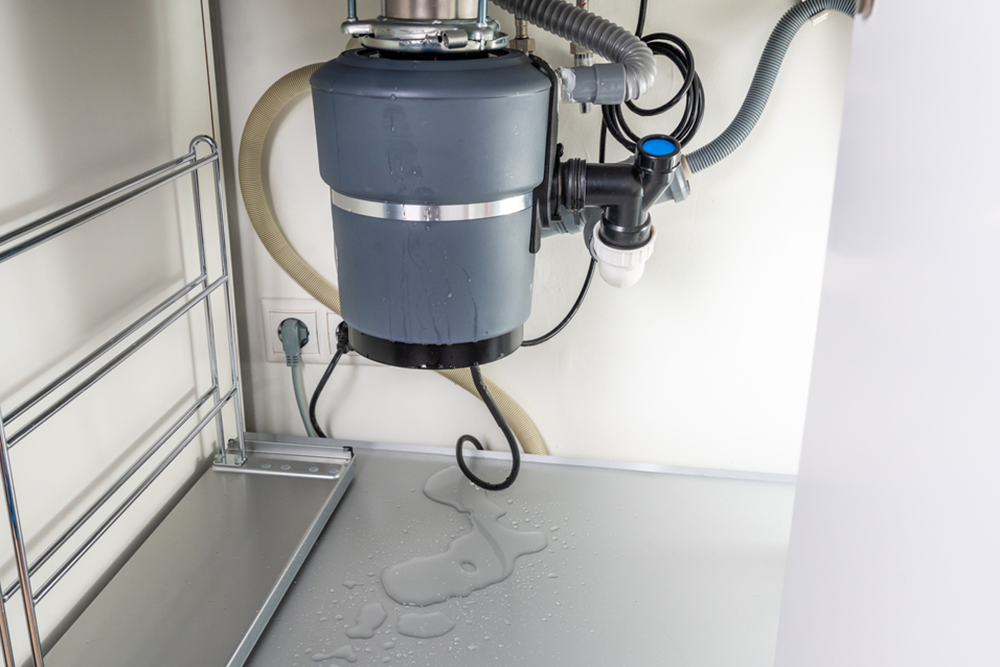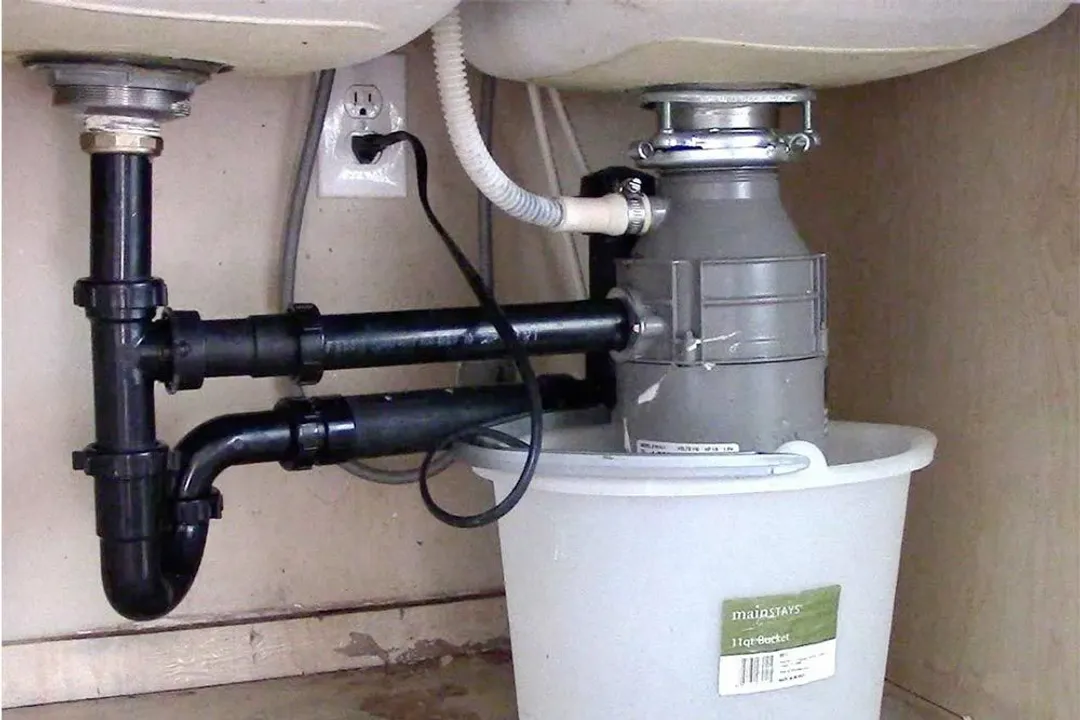Trusted Solutions for Fixing a Dripping Garbage Disposal
Trusted Solutions for Fixing a Dripping Garbage Disposal
Blog Article
This great article below pertaining to The Handy Guide To Fixing Your Garbage Disposal Leaking is amazingly stimulating. Read on and make your own personal assumptions.

Waste disposal unit are crucial kitchen area devices that help in taking care of food waste efficiently. However, a dripping waste disposal unit can be a frustrating and untidy trouble to manage. Fortunately, many leakages can be repaired easily with a couple of straightforward steps. In this short article, we will certainly go over how to repair a dripping garbage disposal successfully.
Intro
Garbage disposals are set up under kitchen sinks and are developed to shred food waste into smaller items, allowing it to go through the pipes system conveniently. While these tools are generally reliable, leakages can occur with time due to wear and tear, loose links, or damage to the device.
Typical Sources Of Leakages in Trash Disposals
Worn Seals and Gaskets
Seals and gaskets play a critical role in preventing water from leaking out of the waste disposal unit. Gradually, these components can degrade, leading to leakages around the disposal unit.
Loose Links
The links in between the garbage disposal and the plumbing system can end up being loosened over time, triggering water to leakage out throughout procedure.
Cracks or Holes in the Disposal Unit
Physical damage to the garbage disposal, such as fractures or openings in the real estate, can likewise result in leaks.
Identifying the Resource of the Leak
Before trying to take care of a leaking waste disposal unit, it is vital to identify the source of the leakage. This can commonly be done with aesthetic examination or by carrying out straightforward tests.
Visual Assessment
Check the waste disposal unit system very carefully for any type of indications of water leakage. Pay very close attention to locations around seals, gaskets, and connection points.
Examining for Leakages
One way to examine for leakages is by running water via the disposal unit and looking for any kind of noticeable signs of leakage.
Tools and Products Needed for Fixing a Dripping Garbage Disposal
Prior to beginning the repair work procedure, gather the necessary tools and products, consisting of a screwdriver, flexible wrench, plumbing professional's putty, substitute seals or gaskets, and epoxy or patching material for fixing cracks or holes.
Step-by-Step Overview to Dealing With a Dripping Waste Disposal Unit
Shut off the Power
Before attempting any kind of repair work, make sure that the power to the garbage disposal system is switched off to prevent the danger of electrical shock.
Locate the Leakage
Identify the precise place of the leak and figure out the reason.
Tighten up Links
Make use of a wrench to tighten up any loose links between the disposal device and the pipes system.
Change Seals or Gaskets
If the leakage is due to used seals or gaskets, get rid of the old components and replace them with new ones.
Patching Fractures or Holes
For splits or holes in the disposal unit, usage epoxy or a suitable patching product to seal the damaged area.
Evaluating the Garbage Disposal After Repair Work
As soon as the fixing is total, examine the garbage disposal by running water via it to guarantee that the leak has been fixed.
Preventive Upkeep Tips to Avoid Future Leaks
To avoid future leakages, it is necessary to perform regular maintenance on your waste disposal unit. This consists of keeping it tidy, staying clear of putting non-food things or difficult items down the disposal, and periodically looking for leaks or other concerns.
Conclusion
In conclusion, fixing a dripping waste disposal unit is a reasonably uncomplicated process that can be finished with standard tools and products. By complying with the actions laid out in this write-up and practicing preventative maintenance, you can keep your waste disposal unit in good working condition and prevent pricey repair services in the future.
HERE’S HOW TO FIX YOUR GARBAGE DISPOSAL
WHAT TO DO IF SOMETHING IS STUCK IN YOUR GARBAGE DISPOSAL
If the impeller won’t turn, there’s probably something stuck in the disposal. It could be a steak bone or peach pit, although plumbers report pulling all sorts of inappropriate objects out of disposals, such as bottle caps or aluminum foil. Make sure power to the disposal is off, and look inside to see if you can see the source of the jam.
Never stick your fingers in a disposal. Pull out anything you see with tongs or pliers.
If the disposal still won’t work, it may be time to call a plumber or consider buying a new disposal. GEM Plumbing & Heating is here for all of your garbage disposal needs.
WHAT TO DO IF YOUR GARBAGE DISPOSAL DRAIN IS CLOGGED
Take everything out from underneath your sink and put a bucket or other container under your disposal to catch any water that drains out. Disconnect your disposal from the power supply. If it’s plugged into a wall outlet, unplug it. If it’s hardwired into an electrical box, go to the electrical panel and turn off the breaker for the disposal. Pour ¼ cup of baking soda into the drain, followed by ½ cup of white vinegar. Give the solution a few minutes to fizz and do its work. Look into the disposal with a flashlight to see if you can see an object that might be causing the clog. If you see it, remove it using tongs or pliers. MORE TIPS ON DEALING WITH A CLOGGED GARBAGE DISPOSAL
Never use drain cleaner in a garbage disposal. It can damage the plastic parts inside the disposal. You can also be splashed with the caustic liquid while working to clear the clog. Beware! Never stick your fingers into a garbage disposal. Trust us — not a good idea. In many instances, your dishwasher drains through your garbage disposal. This allows the disposal to grind any large food particles that may be drained out of your dishwasher. There are some jurisdictions, however, where the plumbing code prohibits such a connection. WHAT TO DO WHEN YOUR DISHWASHER DRAINS THROUGH THE DISPOSAL
Run some water in the sink so your plunger has at least a ½-inch of water to create a seal and plunge vigorously up and down several times. You may need to repeat this several times. Run hot water down the drain to clear any residue that remains.

I am just very excited about Why Is and I am assuming you enjoyed the new entry. Sharing is good. Helping others is fun. Thanks for your time invested reading it.
Explore Report this page